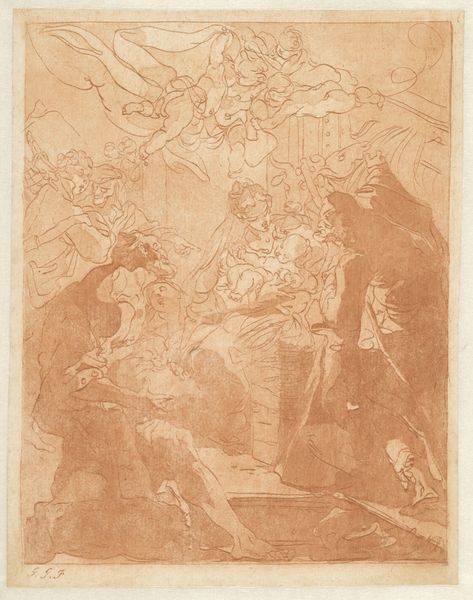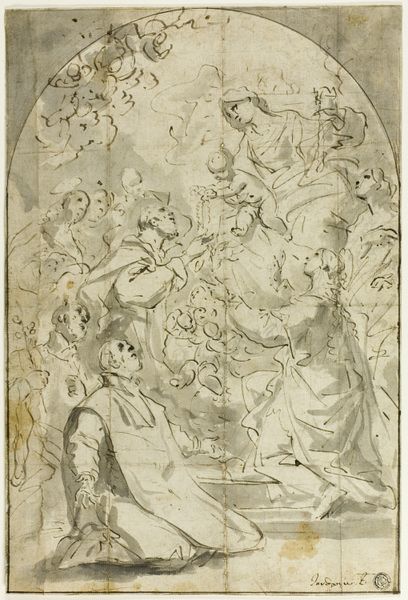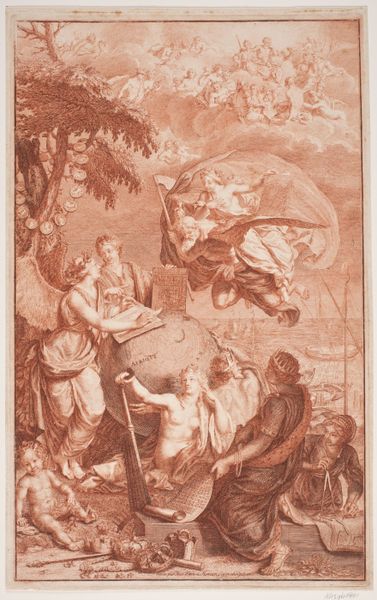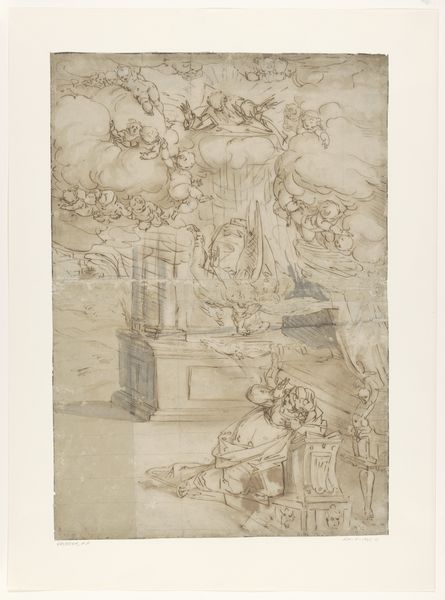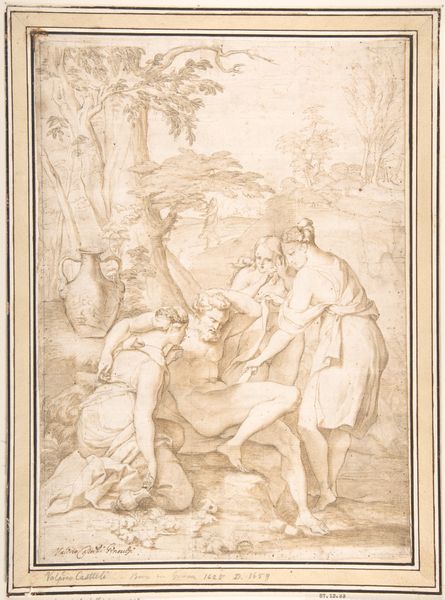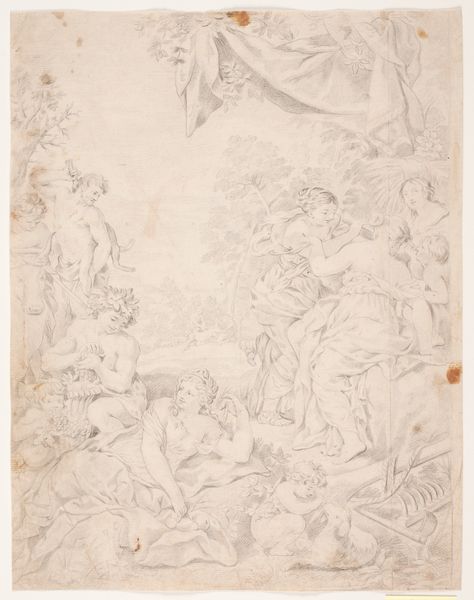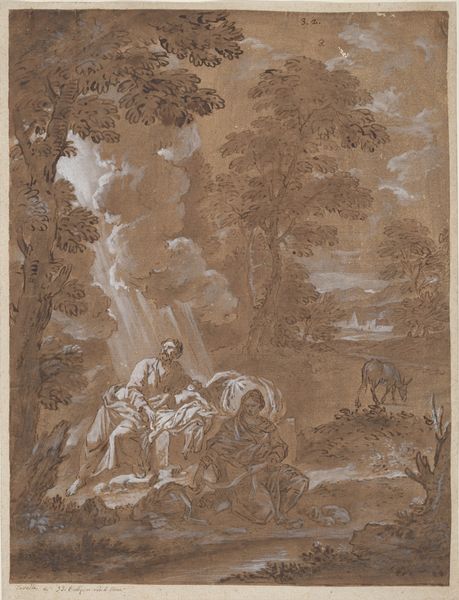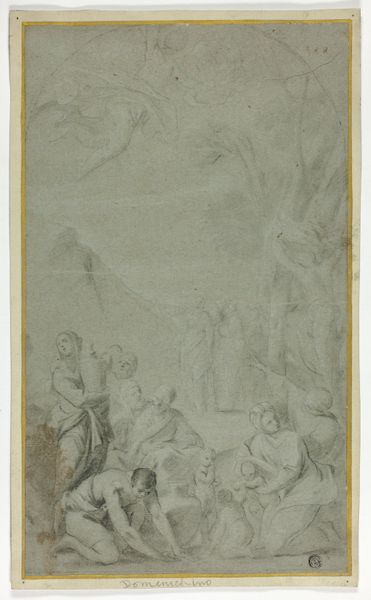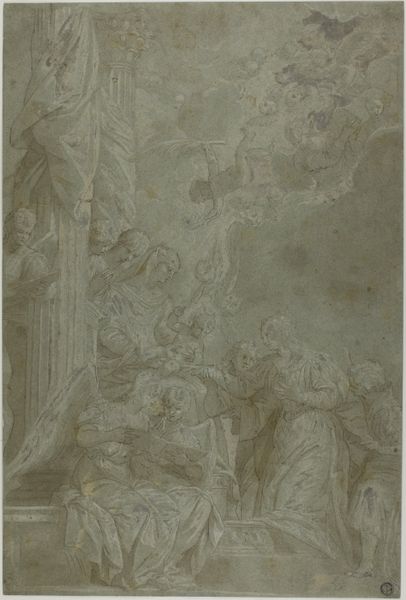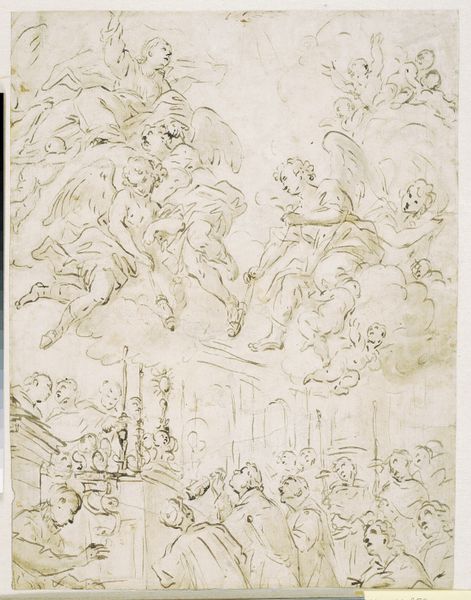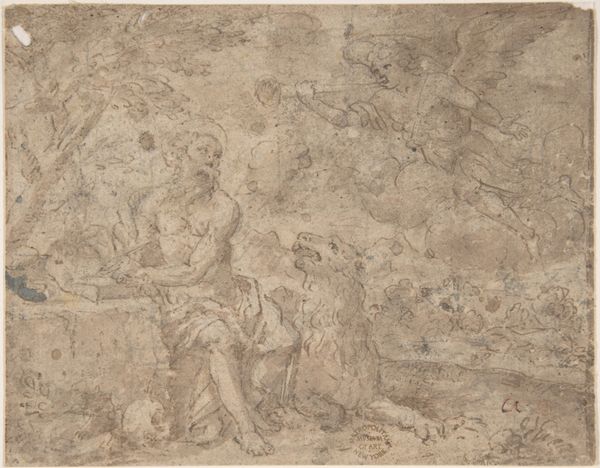
drawing, paper, graphite
#
drawing
#
allegory
#
narrative-art
#
landscape
#
figuration
#
paper
#
11_renaissance
#
graphite
#
history-painting
#
academic-art
#
italian-renaissance
Dimensions: 409 × 265 mm
Copyright: Public Domain
Curator: Here we have Andrea Boscoli's rendition of "Annunciation." This graphite drawing on paper is currently housed here at The Art Institute of Chicago. What's your initial take on this scene? Editor: There's a spectral quality to the entire composition; figures emerging almost tentatively. It suggests to me the fragile balance between human agency and divine will in this narrative. Curator: Note how Boscoli utilizes line weight and shading. He establishes depth through meticulous detailing of the architectural elements and soft rendering of figures in the clouds. Editor: I find myself contemplating Mary's posture. She's not just receiving divine information; her submission carries social weight. Consider the era and how patriarchal power used female submission to justify social structures. The Church then, as now, frequently relies on female allegories and representations, especially regarding subservience and devotion, in propagating their ideals. Curator: Precisely! The visual language here employs verticality, the divine figures placed higher, symbolizing a clear hierarchy and a linear movement of information downwards. Also notice, how does the landscape interweave and play within the religious allegory being presented? Editor: Ah, yes! Looking at those Italian Renaissance landscapes also reminds me that not all women were viewed the same way or had similar access. White upper-class women occupied a vastly different space than peasants or racialized minorities during this time and continue to do so. So whose annunciation are we really discussing and visualizing? Curator: These figures within, as studies in light and shade, create forms that allow for symbolic readings of virtue, purity, and faith. This contributes greatly to the symbolic richness of the scene. Editor: Absolutely, and framing the historical implications behind the drawing ensures we can reexamine and understand how these notions continue to evolve across cultural, racial, and gender divides. Curator: I appreciate how looking closer has illuminated for us that while it reflects Boscoli’s unique technical skillset, it also reveals layered meanings beyond the immediate story. Editor: Indeed, it also makes us ponder the multifaceted historical, gendered, and religious implications inherent within "Annunciation."
Comments
No comments
Be the first to comment and join the conversation on the ultimate creative platform.
